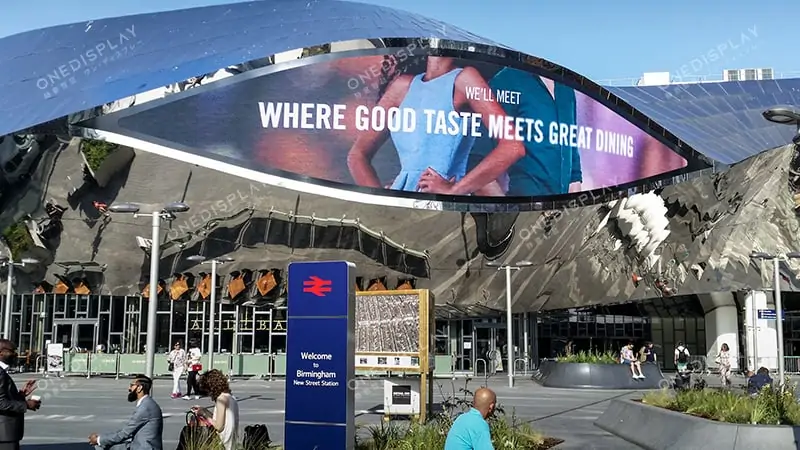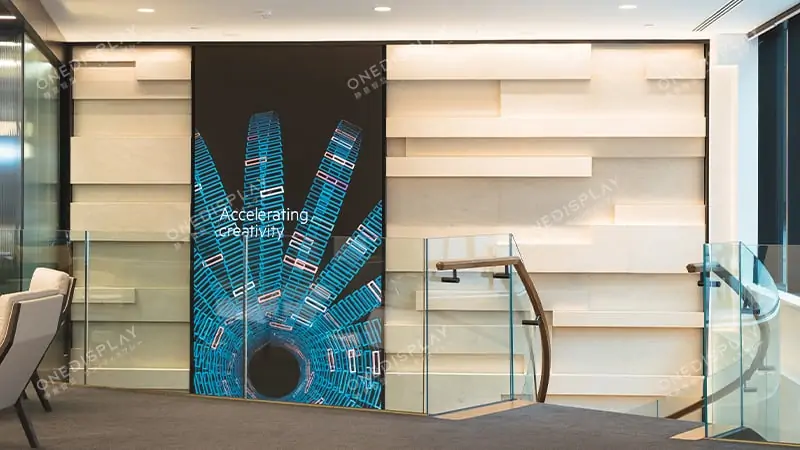One of the most important aspects of any LED outdoor display screen/sign is simply its brightness. Anyone who’s tried to use an iPad at the beach or watch a TV bathed in afternoon sun understands that viewing the screen in daylight is what really counts, no matter how rugged the display is. So an outdoor display’s brightness is the one thing that truly sets it apart from an indoor display.
Similarly, an outdoor LED display has to be brighter than an indoor led display . Therefore, before you invest in any outdoor LED sign, it’s important to understand what the different aspects of outdoor LED display brightness are; and how they work.
But don’t worry if you aren’t well aware of its different aspects like nits, lumens, and brightness of an outdoor LED screen, and how these work in improving the outdoor LED display brightness. That’s simply because we have you covered here with some detailed insight on each of these terms. So let’s go ahead, and discover them, shall we?
Lumens, Nits, and Brightness:
With so many different types of measurements and contributing factors to overall LED sign brightness, the topic can quickly become confusing. However, the sign industry has settled on a standard measurement that will help you to discuss and compare LED signs: the nit. Also known as “candelas per square meter”, a nit is a unit of measurement for the total brightness over one square meter of an LED display. This value takes into account all of the contributing factors to brightness, such as the number of LEDs per pixel, the pixel pitch (distance between pixels) and the brightness of individual LEDs.
This measurement is different than what is typically used for single light sources such as projectors and flashlights, which are measured in lumens. As the light source gets farther away from the surface it is projecting on, the brightness per square meter decreases (think of this as the same amount of light spread over a larger area).
This measurement assumes that all of the LEDs within the square meter are on at their full brightness as allowed by the sign software and hardware configuration. This means the sign is at its brightest white for a full color display, or brightest red for a shaded red display. A special measurement device is used to deliver the nit rating of the sign. Outdoor LED signs can range from 5,000 to 8,000 nits or higher. In comparison, typical televisions range from 500 to 1,000 nits and indoor LED signs from 1,000 to 2,000 nits.
Why does Brightness Matter?
There are two important things to consider related to led screen brightness: how well it competes with the sun, and how long it will compete with the sun. Ensuring that your led screen is readable during the day is vital to the success of having passers by read your led screen. The brighter the display, the better able it is to compete with the sun.
In addition, LEDs do not burn out but instead grow dimmer with use. The dimmer an individual LED becomes, the less effective the overall sign is at competing with the sun. Starting with a brighter display ensures that your LED screen will be readable for many years into the future.
Now if we talk about the different outdoor LED signs brightness levels, we can divide them as:
Shadow friendly brightness, Sunset suitable brightness, Extreme brightness.
Due to different outdoor locations that we tend to choose for the installation of our LED display signs, one specific amount of outdoor LED display nit doesn’t serve efficiently on all outdoor places.
Outdoor LED Display Nit According to Location
Now we’ve mentioned how each of the outdoor locations requires a different nit or brightness level of a LED display to make the content viewable and vivid for the reader. So for a clearer understanding and view of different amounts of nit in an outdoor LED display screen, let’s discuss the different locations and their brightness requirements below.
Shadow Brightness – 800-1500 Nits: As obvious as it is by the name, this type of LED outdoor display net quantity makes it easier for you to install your LED display sign in places that are shadowed. For example, it can be in a protected location, under an eave, or somewhere in the east where it would only face the morning sun.
Sunset Brightness – 2000-3500 NITS: These types of LED screens consist of a larger amount of nits to ensure that the display screen is bright enough to show a clear and vivid display in the extremely bright outdoor places. Hence, if you’re willing to install your LED display anywhere near a pool, in the middle of some mall or plaza, or simply somewhere facing west direction, then this would serve you with enough brightness.
Extreme Brightness – 4500-6000 NITS: This outdoor LED display nit type serves as one of the brightest LED display sign options, for use in the brightest of places. Also, they are termed as high brightness displays that make the display content a lot more visible than any other display screen with lower nit amount would.
Finally
Now, as much as all these brightness levels of an outdoor display are concerned, the dimmer option on these bright displays is also an important aspect. Besides, who would want to make their customers and viewers blind with that extreme light at night time, right? Therefore, outdoor led screens can be used with ambient light sensors to form an intelligent brightness adjustment system, so that the screen brightness is always in a comfortable state – don’t worry about that!
However, if you have a clear and detailed understanding of the levels and working of outdoor LED display brightness, you are sure to make use of your display sign in a better and efficient way!


